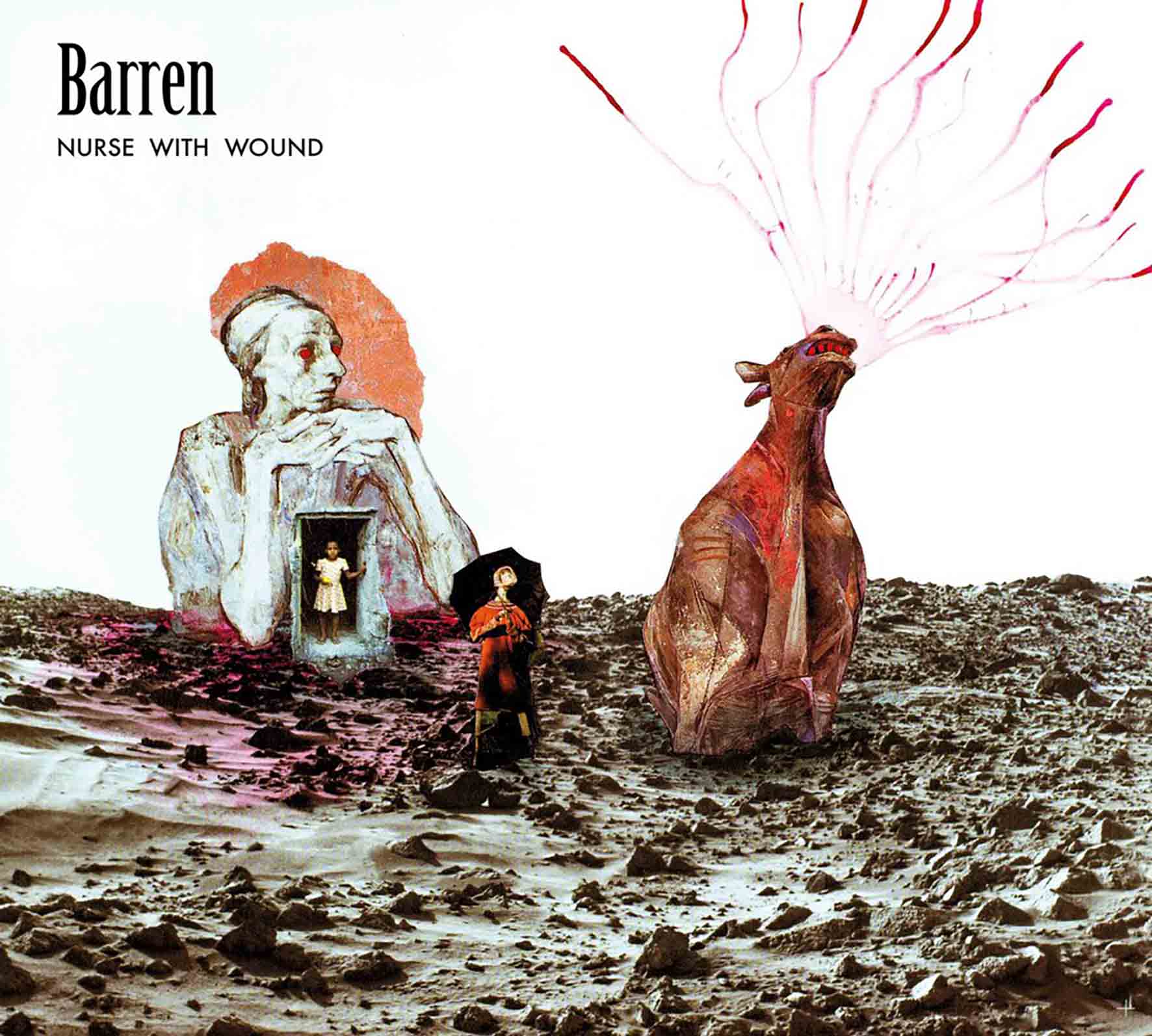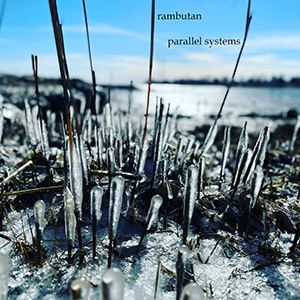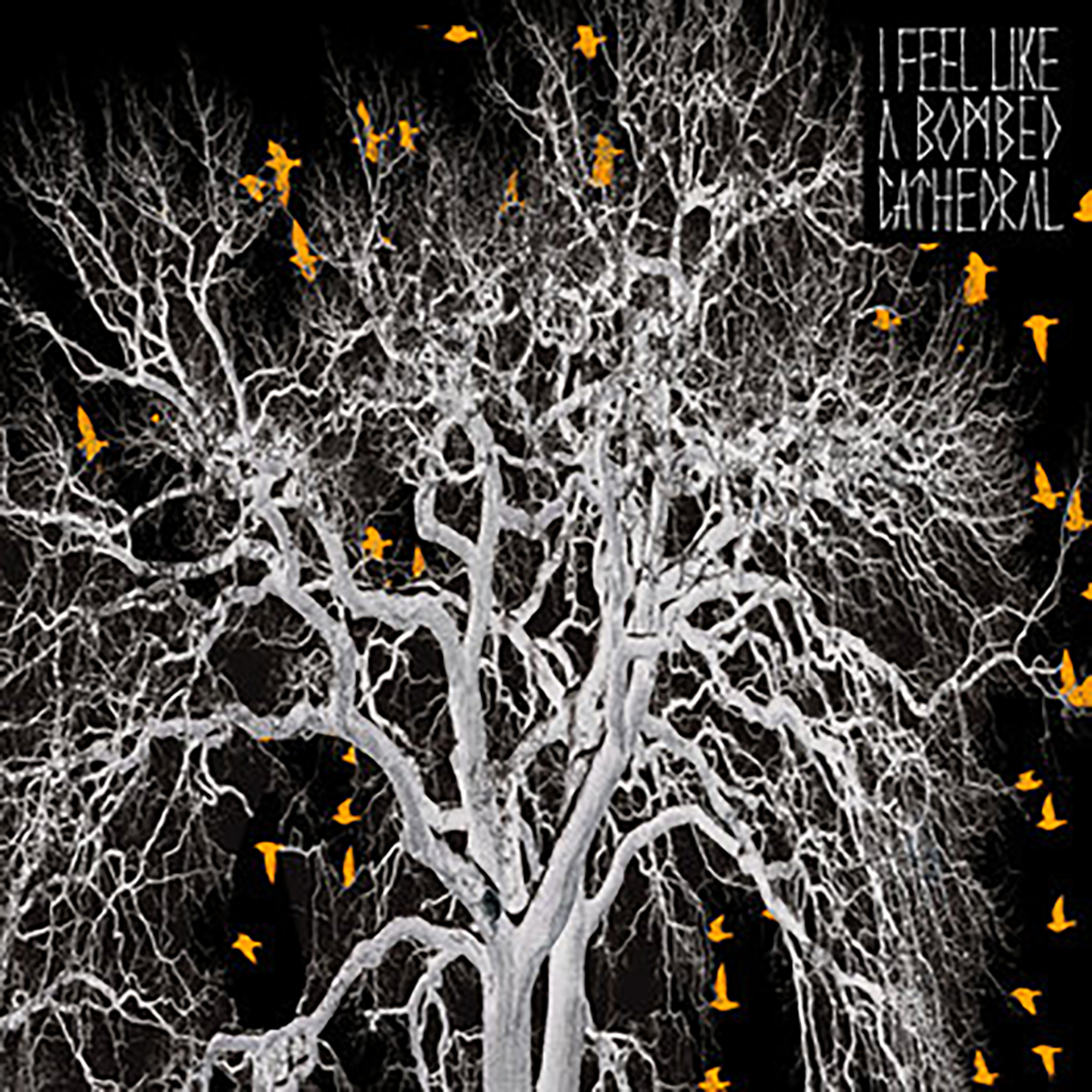 This latest album from Skelton seems intended to be a major new statement, though not quite a formal follow-up to last year's These Charms May be Sung Over a Wound, as double LPs are a real rarity in the prolific composer's discography. If it was not intended as such, it certainly has the ambitious conceptual framework and focused power of his strongest work. For these four pieces, Skelton used a self-devised divination deck of Proto-Indo-European word roots for inspiration, making the album the fruit of an occult-tinged and antiquarian word game. Skelton also maintained the same restricted palette and duration for each piece, yet the tone varies significantly between them, as he treated each composition as a meditation upon a single, unvoiced question. To some degree, Four Workings is an especially ambient-minded release, as the hypnotically repeating melodic fragments are reminiscent of Celer's most loop-driven fare. The similarities mostly end there, however, as the billowing ambiance is often a smokescreen for a more sharp-edged and sophisticated undercurrent that slowly emerges from the murky depths. This is an unusually strong suite of compositions for Skelton's current phase, and the first piece in particular is probably among his finest moments to date.
This latest album from Skelton seems intended to be a major new statement, though not quite a formal follow-up to last year's These Charms May be Sung Over a Wound, as double LPs are a real rarity in the prolific composer's discography. If it was not intended as such, it certainly has the ambitious conceptual framework and focused power of his strongest work. For these four pieces, Skelton used a self-devised divination deck of Proto-Indo-European word roots for inspiration, making the album the fruit of an occult-tinged and antiquarian word game. Skelton also maintained the same restricted palette and duration for each piece, yet the tone varies significantly between them, as he treated each composition as a meditation upon a single, unvoiced question. To some degree, Four Workings is an especially ambient-minded release, as the hypnotically repeating melodic fragments are reminiscent of Celer's most loop-driven fare. The similarities mostly end there, however, as the billowing ambiance is often a smokescreen for a more sharp-edged and sophisticated undercurrent that slowly emerges from the murky depths. This is an unusually strong suite of compositions for Skelton's current phase, and the first piece in particular is probably among his finest moments to date.
The opening "[ ken- ] commencement" initially takes shape as a slow, sad melody of distorted string swells that languorously unfolds. Notably, however, the notes start to accumulate a shimmering wake with a sharp metallic edge. That element ultimately steals the show, as it merges with some deep drones around the piece's halfway point to blossom into a quavering crescendo of complex, bittersweet harmonies. It calls to mind a spectral orchestra playing an achingly beautiful slow-motion symphony of notes that lazily streak, quiver, and break apart. It is a damn-near perfect piece. The central melody, dreamily fluttering core, and frayed textures all combine to leave a deep and haunting impression. The following "[ aus- ] radiance" is a bit more billowing and soft-focused, evoking the flickering play of sunlight across a bank of dark, slow-moving clouds. The third piece ("[ aus- ] radiance") initially has the same aesthetic, but unexpectedly blooms into yet another album highlight. At times, it evokes a time-stretched recording of an organist soundtracking a silent horror film, but with a twist: the lovelorn organist unconsciously transforms everything into a wistful reverie. Gradually, it turns into an angelic yet steadily darkening haze that cocoons the oblivious organ melody. The closer ("[ ghē- ] releasement") takes more time than usual to get going. What begins as a glacially see-sawing pulse weaves through a fog of quietly roiling noise to become a hazily remembered/half-imagined ‘70s synthy space ambient album a la Tangerine Dream. While I wish that final piece was more of a dynamic culmination than a vaguely meditative comedown, the previous pieces admittedly set the bar unfairly high. If something like Four Workings is what results whenever Skelton makes up his own archeologically themed divination deck, I would see little incentive to abandon that strategy.
Samples can be found here.



 This double album had the misfortune of being released near the end of 2020, so it lamentably did not quite get the attention that it deserved (and being a live album probably did not help matters much either).  Granted, it has admittedly been a while since the NWW camp dropped an album that I would breathlessly proclaim a stone-cold masterpiece, yet the project's current era features quite a formidable lineup. In fact, most United Dairies/ICR releases in recent years have been refreshingly solid for an entity with such a vast and historically erratic discography. Barren happily continues that trend, documenting two performances from differing lineup configurations that have been deemed "amongst their most unusual performances." In this context, however, "unusual" means "very professional-sounding longform works conspicuously free of sinister whimsy." Significantly, the two performances are almost unrecognizable as NWW despite cannibalizing a pair of studio releases. They make for quite a satisfying deep-psych/spaced-out ambient release in their own right, however, as there is no rule stating that albums need to be representative to be enjoyable.
This double album had the misfortune of being released near the end of 2020, so it lamentably did not quite get the attention that it deserved (and being a live album probably did not help matters much either).  Granted, it has admittedly been a while since the NWW camp dropped an album that I would breathlessly proclaim a stone-cold masterpiece, yet the project's current era features quite a formidable lineup. In fact, most United Dairies/ICR releases in recent years have been refreshingly solid for an entity with such a vast and historically erratic discography. Barren happily continues that trend, documenting two performances from differing lineup configurations that have been deemed "amongst their most unusual performances." In this context, however, "unusual" means "very professional-sounding longform works conspicuously free of sinister whimsy." Significantly, the two performances are almost unrecognizable as NWW despite cannibalizing a pair of studio releases. They make for quite a satisfying deep-psych/spaced-out ambient release in their own right, however, as there is no rule stating that albums need to be representative to be enjoyable. This mesmerizing and unique gem from Sublime Frequencies documents some killer field recordings made by Hisham Mayet in the Upper West region of Ghana back in 2019. I knew absolutely nothing about gyril music before hearing this album, but the most salient detail is that the primary instrument is a traditional xylophone used by the Lobi people. That does not even remotely convey how strange and wonderful these recordings are, but SF's description includes phrases like "long form trance music" and "acoustic techno," and those seem to hit the mark in spirit. To me, this album sounds like a ritualistic drum circle, but way more sophisticated, melodic, and psych-damaged than anything I would expect from actual communal percussion. As with a lot of field-recorded Sublime Frequency fare, it is very easy to dismiss this album as just an interesting window into an underheard culture from a cursory or casual listen. Once I listened to Dagara in a focused way, however, it quickly revealed itself to be something quite transcendent, as it seamlessly merges the otherness of great "experimental" music with an almost ecstatic visceral intensity.
This mesmerizing and unique gem from Sublime Frequencies documents some killer field recordings made by Hisham Mayet in the Upper West region of Ghana back in 2019. I knew absolutely nothing about gyril music before hearing this album, but the most salient detail is that the primary instrument is a traditional xylophone used by the Lobi people. That does not even remotely convey how strange and wonderful these recordings are, but SF's description includes phrases like "long form trance music" and "acoustic techno," and those seem to hit the mark in spirit. To me, this album sounds like a ritualistic drum circle, but way more sophisticated, melodic, and psych-damaged than anything I would expect from actual communal percussion. As with a lot of field-recorded Sublime Frequency fare, it is very easy to dismiss this album as just an interesting window into an underheard culture from a cursory or casual listen. Once I listened to Dagara in a focused way, however, it quickly revealed itself to be something quite transcendent, as it seamlessly merges the otherness of great "experimental" music with an almost ecstatic visceral intensity. 1988's Love Hysteria was my introduction to Peter Murphy as a solo artist, likely initiated by MTV's 120 Minutes airplay of "All Night Long." A minor hit in the United States, this and a host of other strong tracks from Murphy's second solo release would see Murphy exposed to a renewed audience as a solo performer, those both unfamiliar and familiar with his back catalog. Some of this may be attributable to the start of Murphy's songwriting collaboration with Paul Statham (ex B-Movie). This fruitful union would see the two working together for another six albums, producing some of his best-loved works over the next few years. This work alone spawned the aforementioned "All Night Long" as well as masterworks "Indigo Eyes," "Dragnet Drag," and "Blind Sublime."
1988's Love Hysteria was my introduction to Peter Murphy as a solo artist, likely initiated by MTV's 120 Minutes airplay of "All Night Long." A minor hit in the United States, this and a host of other strong tracks from Murphy's second solo release would see Murphy exposed to a renewed audience as a solo performer, those both unfamiliar and familiar with his back catalog. Some of this may be attributable to the start of Murphy's songwriting collaboration with Paul Statham (ex B-Movie). This fruitful union would see the two working together for another six albums, producing some of his best-loved works over the next few years. This work alone spawned the aforementioned "All Night Long" as well as masterworks "Indigo Eyes," "Dragnet Drag," and "Blind Sublime." This collection of (mostly) acapella field recordings from Kink Gong's Laurent Jeanneau truly emphasizes the "sublime" part of the Sublime Frequencies vision, as this is quite an eerily lovely and mesmerizing album. While the recordings span three different countries (China, Laos, and Vietnam), they are all roughly rooted in a single cultural milieu: the Chinese hill tribes known pejoratively as the Yao ("dog" or "savage"). Understandably, a large number of these tribal folk prefer the name Mien ("people"), but they are a multifarious bunch that have spread beyond China into Southeast Asia and evolved into numerous distinctive and divergent subcultures. The first half of the album is devoted to very pure and simple canon singing ("an initial melody is imitated at a specified time interval by one or more parts"), while the second half offers some compelling and more fleshed-out variations. While the "raw, ethereal, and cosmic" performances that Laurent captured need no additional enhancement to captivate me, the variations are every bit as great as the undiluted essence and give the album an impressively strong dynamic arc.
This collection of (mostly) acapella field recordings from Kink Gong's Laurent Jeanneau truly emphasizes the "sublime" part of the Sublime Frequencies vision, as this is quite an eerily lovely and mesmerizing album. While the recordings span three different countries (China, Laos, and Vietnam), they are all roughly rooted in a single cultural milieu: the Chinese hill tribes known pejoratively as the Yao ("dog" or "savage"). Understandably, a large number of these tribal folk prefer the name Mien ("people"), but they are a multifarious bunch that have spread beyond China into Southeast Asia and evolved into numerous distinctive and divergent subcultures. The first half of the album is devoted to very pure and simple canon singing ("an initial melody is imitated at a specified time interval by one or more parts"), while the second half offers some compelling and more fleshed-out variations. While the "raw, ethereal, and cosmic" performances that Laurent captured need no additional enhancement to captivate me, the variations are every bit as great as the undiluted essence and give the album an impressively strong dynamic arc.
 This second album from Milan-based visual artist/electro-acoustic composer Domiziano Maselli can be a disorienting collision of disparate inspirations at times, but it is certainly an intensely visceral and compelling experience when it hits the mark. Opal's description of the album mentions that Maselli possesses an "uncanny skill to create non-conformist drama," which feels like an apt characterization. It is similarly fair to say that Maselli likely has an extreme fondness for the gloomy prime of artists like Haxan Cloak and Raime, as well as a deep appreciation for Emptyset's seismic and intense approach to sound design. Elements of all three are certainly present on Lazzaro, though Maselli proves quite adept at building upon their best bits. That said, there are also a few pieces that radically break from the influences Maselli wears on his sleeve and they are uniformly brilliant. In one case, he approximates a massive contraption of slowly whirling jagged, rusted metal blades, while elsewhere he unleashes something akin to a demonically possessed string quartet hellbent on conjuring the darkest psychedelia. For me, Lazarro is a very strong album for those two pieces alone, but his execution for everything else is quite impressive as well.
This second album from Milan-based visual artist/electro-acoustic composer Domiziano Maselli can be a disorienting collision of disparate inspirations at times, but it is certainly an intensely visceral and compelling experience when it hits the mark. Opal's description of the album mentions that Maselli possesses an "uncanny skill to create non-conformist drama," which feels like an apt characterization. It is similarly fair to say that Maselli likely has an extreme fondness for the gloomy prime of artists like Haxan Cloak and Raime, as well as a deep appreciation for Emptyset's seismic and intense approach to sound design. Elements of all three are certainly present on Lazzaro, though Maselli proves quite adept at building upon their best bits. That said, there are also a few pieces that radically break from the influences Maselli wears on his sleeve and they are uniformly brilliant. In one case, he approximates a massive contraption of slowly whirling jagged, rusted metal blades, while elsewhere he unleashes something akin to a demonically possessed string quartet hellbent on conjuring the darkest psychedelia. For me, Lazarro is a very strong album for those two pieces alone, but his execution for everything else is quite impressive as well. As his primary (and solo) project, Albany’s Eric Hardiman's Rambutan is always in flux. Some of his many other projects are a bit more predictable: Sky Furrows is 1980s indie noise rock inspired, Spiral Wave Nomads is more free improvisation, etc., but Rambutan has always been something different. Sometimes the work is harsher, other times more subdued and atmospheric, and instrumentation can very significantly from release to release. For this more conceptually album, there is even less predictability. Featuring 69 contributing artists across 33 pieces and over two and a half hours in length, it is fully encompassing of Hardiman’s body of work, solo and in collaboration with others, and reiterates what a multifaceted and gifted artist and performer he is.
As his primary (and solo) project, Albany’s Eric Hardiman's Rambutan is always in flux. Some of his many other projects are a bit more predictable: Sky Furrows is 1980s indie noise rock inspired, Spiral Wave Nomads is more free improvisation, etc., but Rambutan has always been something different. Sometimes the work is harsher, other times more subdued and atmospheric, and instrumentation can very significantly from release to release. For this more conceptually album, there is even less predictability. Featuring 69 contributing artists across 33 pieces and over two and a half hours in length, it is fully encompassing of Hardiman’s body of work, solo and in collaboration with others, and reiterates what a multifaceted and gifted artist and performer he is. Back in 2016, noise/sound art legend Joe Colley returned from a lengthy hiatus to release the solid No Way In on Jason Lescalleet's Glistening Examples, but he has been extremely quiet ever since, surfacing only to release a tape of a durational live performance last year. Happily, he is back again with another major statement and it is quite a monster. It is also unusually accessible at times, as Trance Tapes lives up to its name beautifully (though those trances inevitably curdle into nightmare territory). In some ways, this album resembles a classic noise tape on the more "industrial" side of the spectrum, as each of the four pieces is built from a foundation of relentless, obsessively repeating "machine-noise" to varying degrees. That is merely the starting point, however, as each piece rapidly blossoms into a vividly psychotropic mindbomb of viscerally buzzing frequencies and hypnotically repeating chirps, bleeps, throbs, and looping drones. I suspect many serious noise fans would roll their eyes or spit out their drink in disbelief if I had the temerity to proclaim this a career highlight, so I will refrain from doing that. However, it is extremely difficult to imagine a Joe Colley or Crawl Unit album in which he was able to realize his vision with more clarity and focus than he does with this near-perfect tour de force.
Back in 2016, noise/sound art legend Joe Colley returned from a lengthy hiatus to release the solid No Way In on Jason Lescalleet's Glistening Examples, but he has been extremely quiet ever since, surfacing only to release a tape of a durational live performance last year. Happily, he is back again with another major statement and it is quite a monster. It is also unusually accessible at times, as Trance Tapes lives up to its name beautifully (though those trances inevitably curdle into nightmare territory). In some ways, this album resembles a classic noise tape on the more "industrial" side of the spectrum, as each of the four pieces is built from a foundation of relentless, obsessively repeating "machine-noise" to varying degrees. That is merely the starting point, however, as each piece rapidly blossoms into a vividly psychotropic mindbomb of viscerally buzzing frequencies and hypnotically repeating chirps, bleeps, throbs, and looping drones. I suspect many serious noise fans would roll their eyes or spit out their drink in disbelief if I had the temerity to proclaim this a career highlight, so I will refrain from doing that. However, it is extremely difficult to imagine a Joe Colley or Crawl Unit album in which he was able to realize his vision with more clarity and focus than he does with this near-perfect tour de force. This solo drone project from Ulan Bator's Amaury Cambuzat has been one of my favorite discoveries of the last few years, as both AmOrtH and W featured moments that induced me to proclaim that Cambuzat was "a goddamn drone shaman." This latest album was a bit of a surprise, however, as Cambuzat casually made it available as a digital-only release on his Bandcamp page with just a simple description of "This is the very first recording of I Feel Like a Bombed Cathedral." Apparently, the recordings date from early 2018 and I am amazed that Cambuzat did not feel inclined to make them public until now, as a handful of these pieces are absolute gems that rank among the project’s finest work. A few of the other ones admittedly feel like a searching, partially formed vision of the greatness to come, but γένεσις is much, much better than its humble "vault clearing" origins suggest. I would not have been at all disappointed if this was a proper new Bombed Cathedral release, as the album is absolutely teaming with beautifully warped guitar sounds and immersive layers of richly textured psychedelia. In fact, γένεσις only heightens my expectations for whatever Cambuzat might be working on now, as no sane person would keep music this great on the shelf for three years unless they had something even better in the pipeline.
This solo drone project from Ulan Bator's Amaury Cambuzat has been one of my favorite discoveries of the last few years, as both AmOrtH and W featured moments that induced me to proclaim that Cambuzat was "a goddamn drone shaman." This latest album was a bit of a surprise, however, as Cambuzat casually made it available as a digital-only release on his Bandcamp page with just a simple description of "This is the very first recording of I Feel Like a Bombed Cathedral." Apparently, the recordings date from early 2018 and I am amazed that Cambuzat did not feel inclined to make them public until now, as a handful of these pieces are absolute gems that rank among the project’s finest work. A few of the other ones admittedly feel like a searching, partially formed vision of the greatness to come, but γένεσις is much, much better than its humble "vault clearing" origins suggest. I would not have been at all disappointed if this was a proper new Bombed Cathedral release, as the album is absolutely teaming with beautifully warped guitar sounds and immersive layers of richly textured psychedelia. In fact, γένεσις only heightens my expectations for whatever Cambuzat might be working on now, as no sane person would keep music this great on the shelf for three years unless they had something even better in the pipeline.
